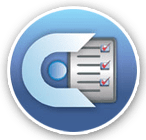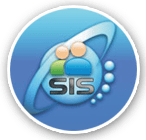Here are some key methods employed:
1. AI-Powered Proctoring
Live AI Proctoring: AI systems continuously monitor the student's actions and behaviors through their webcam and microphone. The AI can detect unusual activities such as multiple people in the room, students talking, or looking away from the screen frequently.
Behavioral Analysis: AI analyzes patterns in the student's behavior, such as their gaze direction, body movements, and facial expressions, to detect anomalies that might suggest cheating.
Voice Detection: AI systems can identify and flag unauthorized voices in the exam environment.
2. Secure Exam Browsers
Browser Lockdown: Students are required to use a secure browser that restricts their ability to open new tabs, access other applications, or use shortcuts. This ensures they cannot search for answers online or access unauthorized resources.
Screen Monitoring: The software can capture and monitor all screen activities to detect if a student tries to use another application or access prohibited materials.
3. Identity Verification
Multi-Factor Authentication: Students must verify their identity using multiple methods such as passwords, OTPs (One-Time Passwords), or biometric data (fingerprints or facial recognition) before and during the exam.
Photo and ID Verification: Students may be required to take a photo and upload a government-issued ID for verification before starting the exam. Some systems use facial recognition to continuously verify the identity of the student throughout the exam.
4. Environmental Scanning
Room Scans: Students may be asked to perform a 360-degree scan of their room using their webcam to ensure no unauthorized materials or devices are present.
Periodic Checks: Random room scans can be requested during the exam to ensure the environment remains secure.
5. Question Security
Randomized Questions: The exam software can randomize the order of questions and answer choices for each student, making it difficult to share answers.
Question Pools: A large pool of questions is used to generate exams, ensuring that no two exams are identical.
Time Limits: Strict time limits for each question or the entire exam reduce the opportunity for students to seek outside help.
6. Network and Device Monitoring
IP Address Tracking: The software can monitor the IP address from which the exam is taken to detect multiple logins from the same or different locations, indicating potential collusion.
Device Restriction: Exams can be configured to be taken only on specific devices, preventing students from switching devices to access unauthorized resources.
7. Policy Enforcement and Legal Measures
Academic Integrity Agreements: Students are often required to sign academic integrity agreements before the exam, reinforcing the consequences of cheating.
Legal Consequences: Clearly outlining the legal and academic repercussions of cheating, which can include expulsion, legal action, or revocation of certifications.
8. Human Oversight
Hybrid Proctoring: Combining AI and human proctors to monitor exams. AI flags suspicious behavior for human review, ensuring a robust monitoring system.
Post-Exam Review: Recorded sessions are reviewed by human proctors to detect any cheating that might have been missed during the live exam.
9. Continuous Improvement
Regular Updates: The software is regularly updated to address new cheating methods and improve security measures.
Feedback Loop: Collecting feedback from exams to continuously enhance the AI algorithms and proctoring methods.
By combining these technologies and strategies, online exam software creates a secure testing environment that significantly reduces the chances of cheating using AI systems or other methods.







